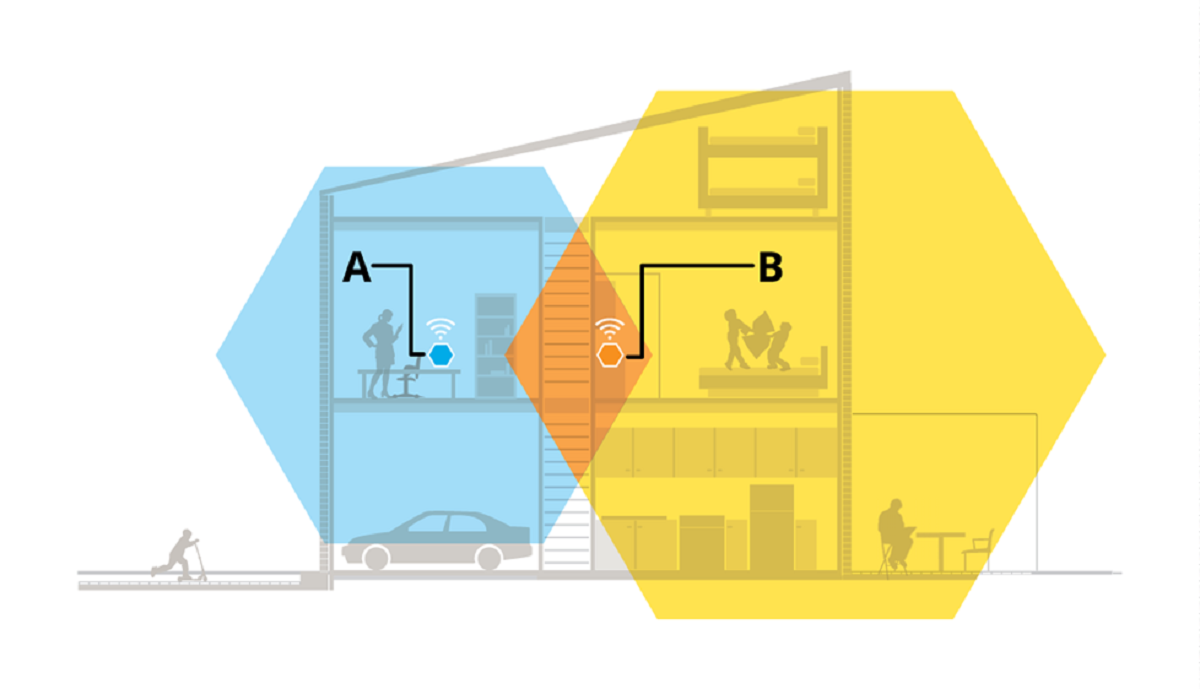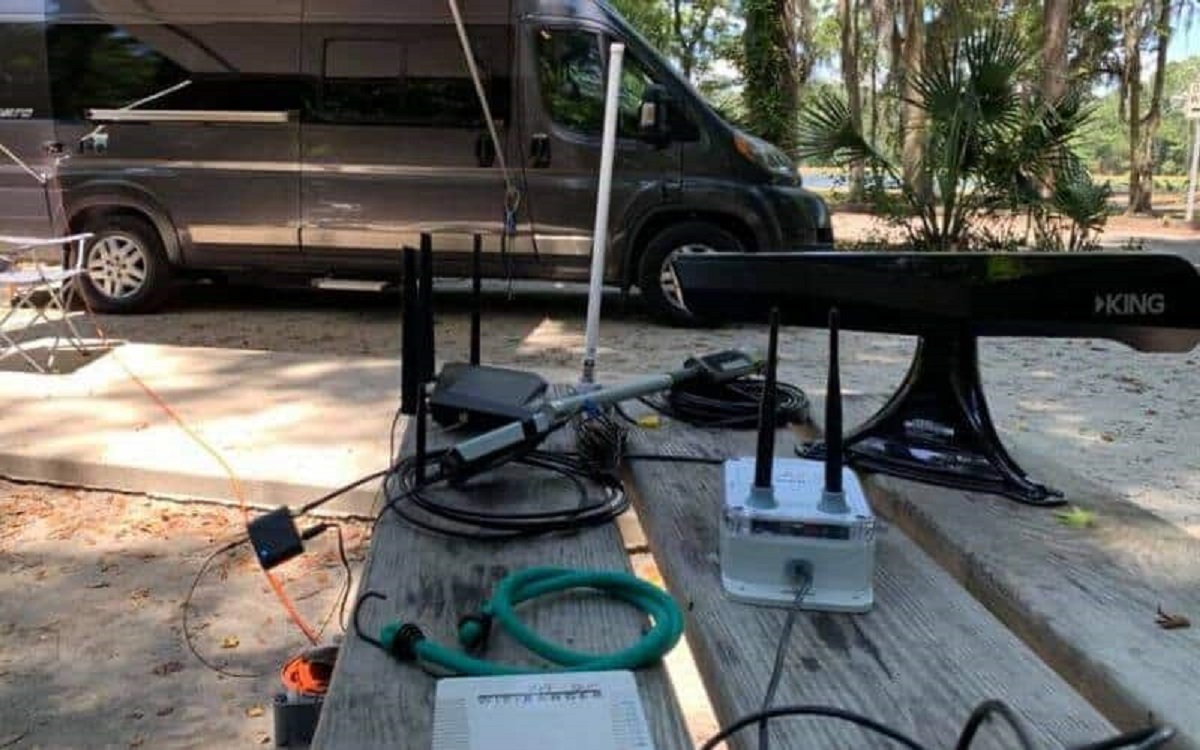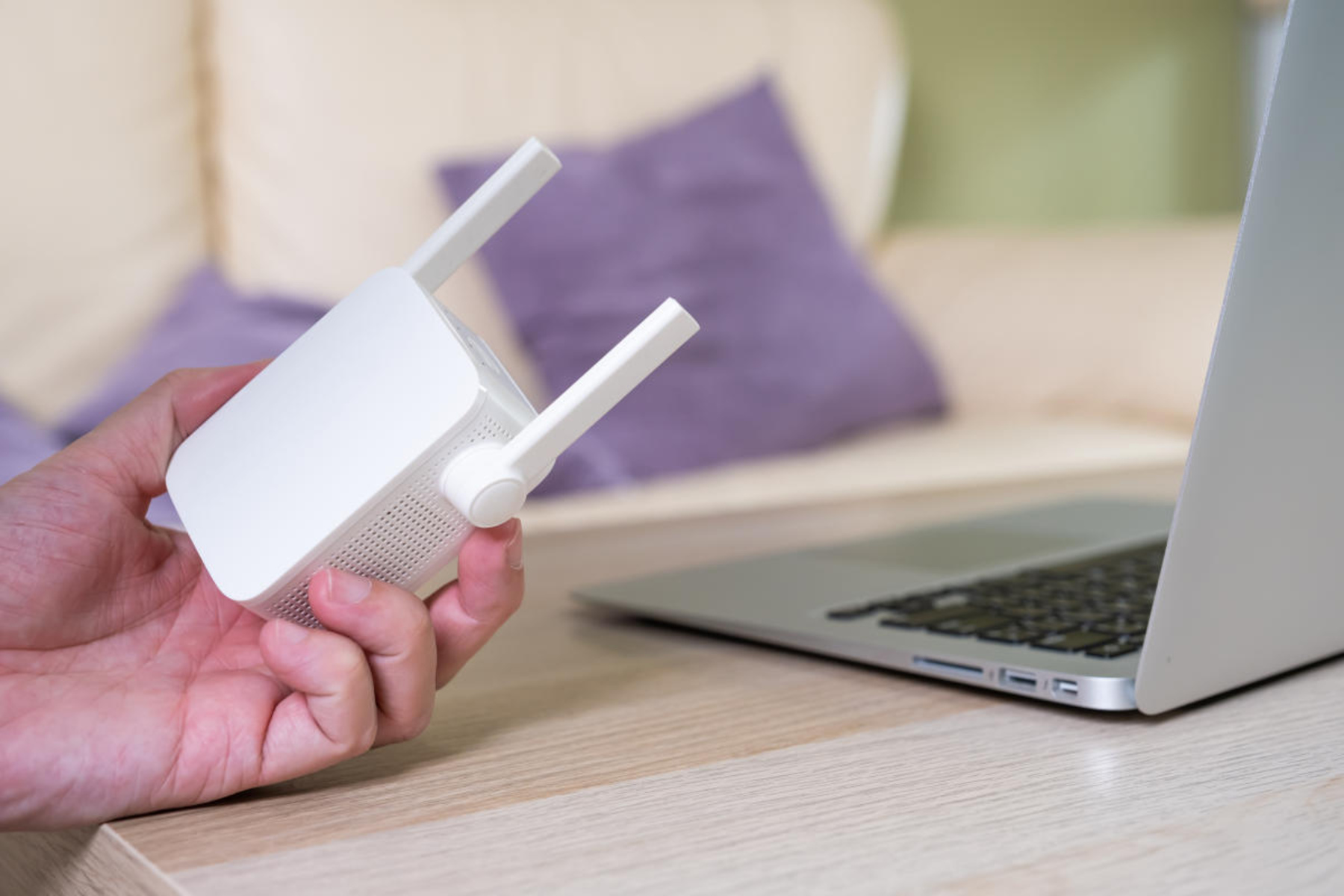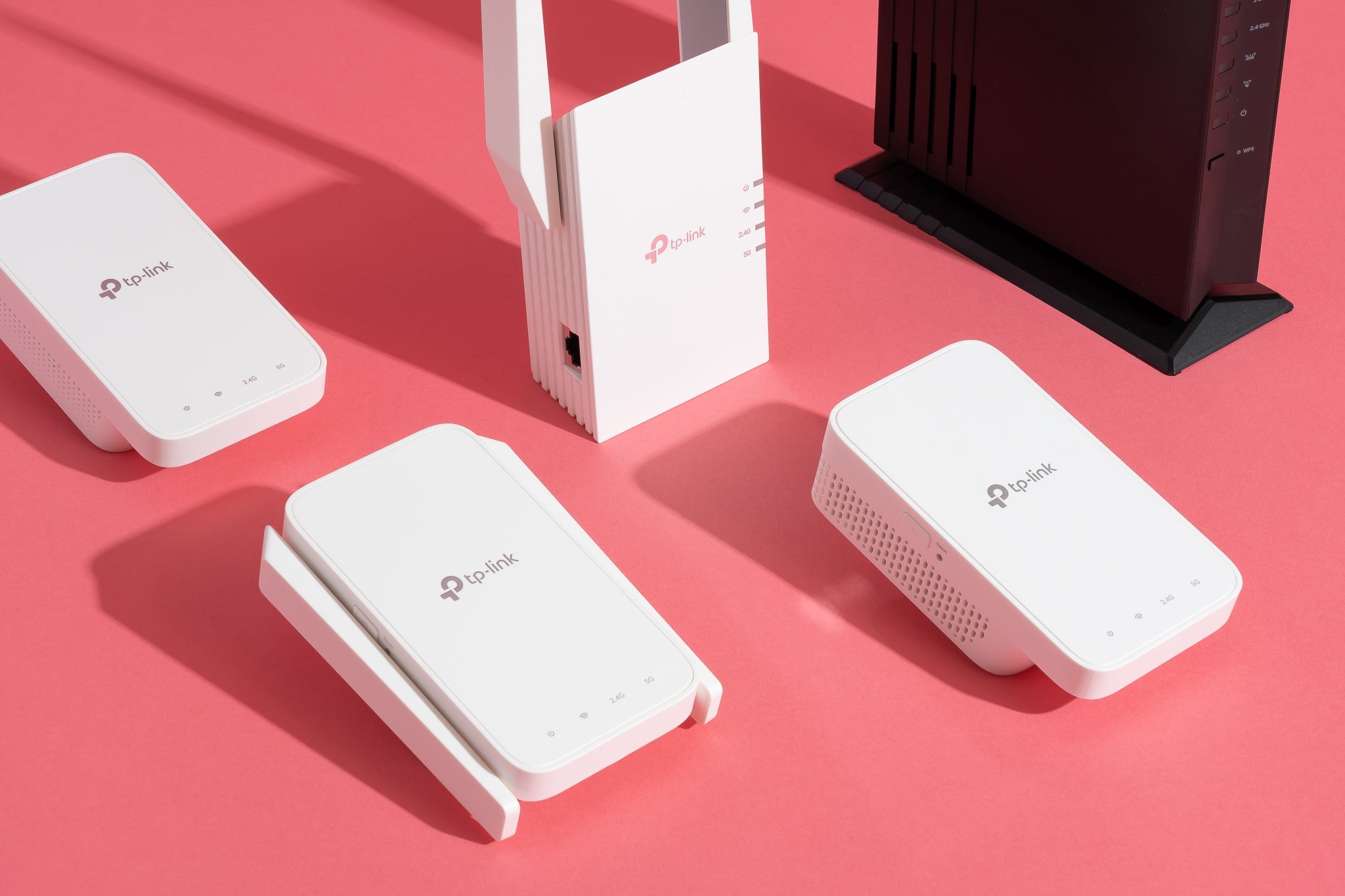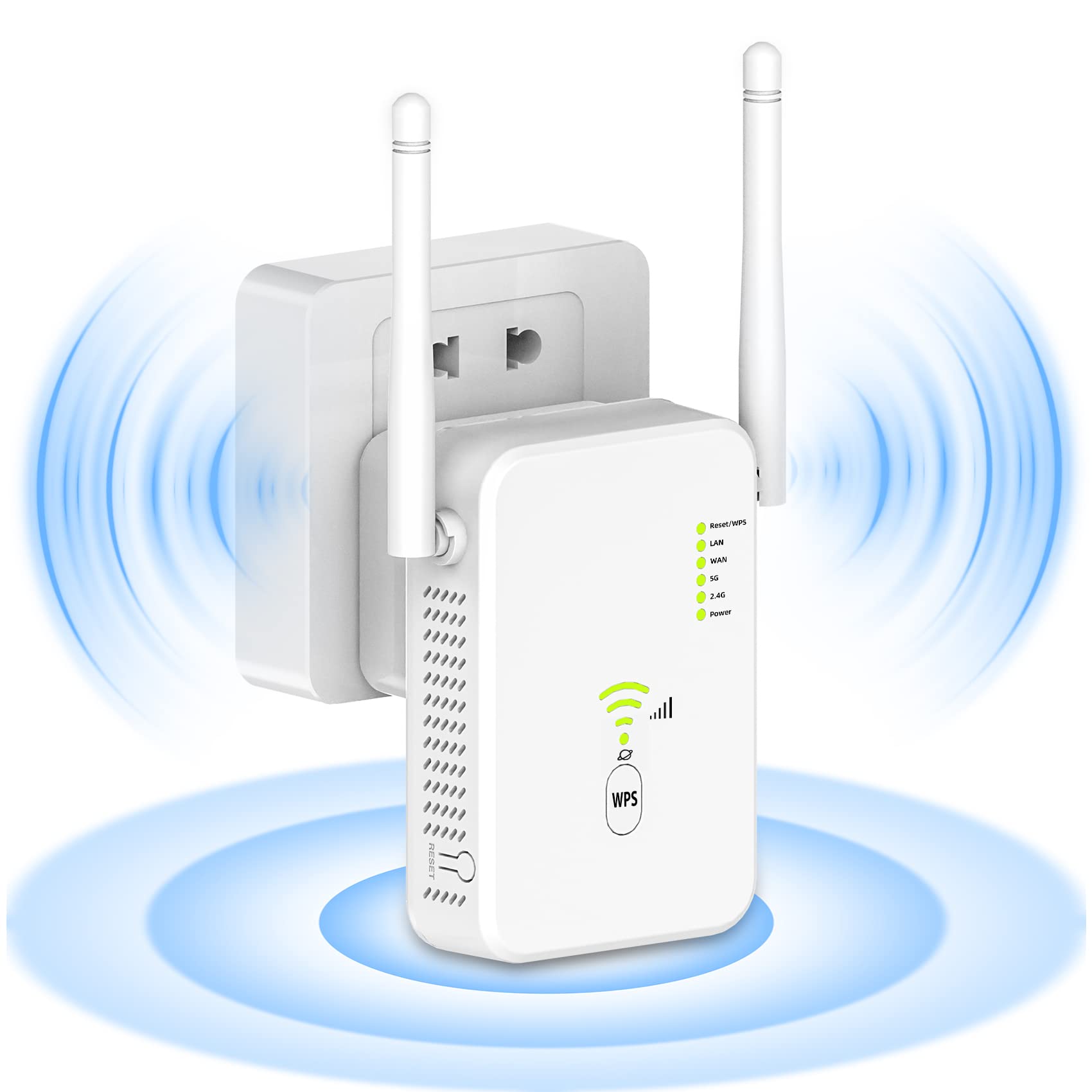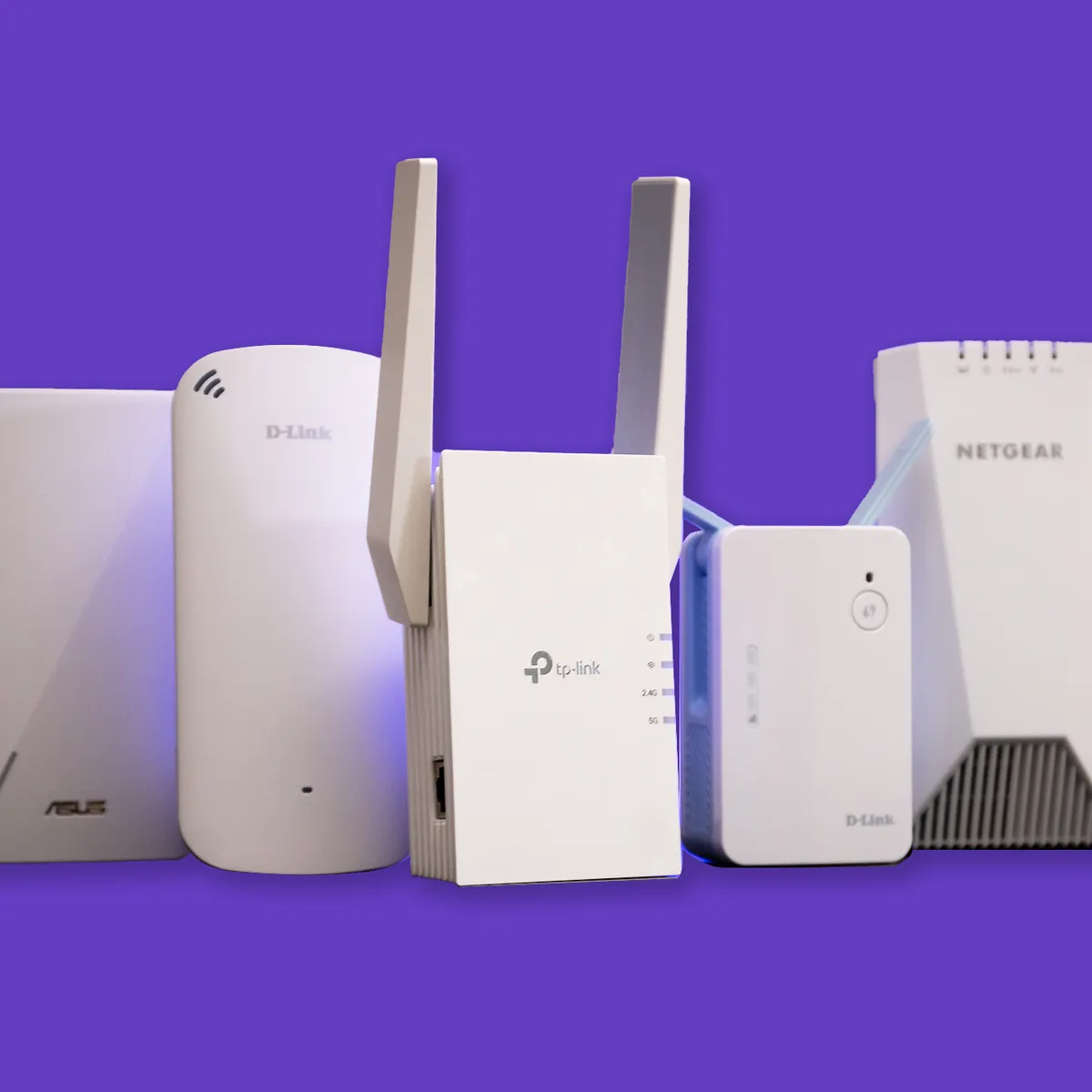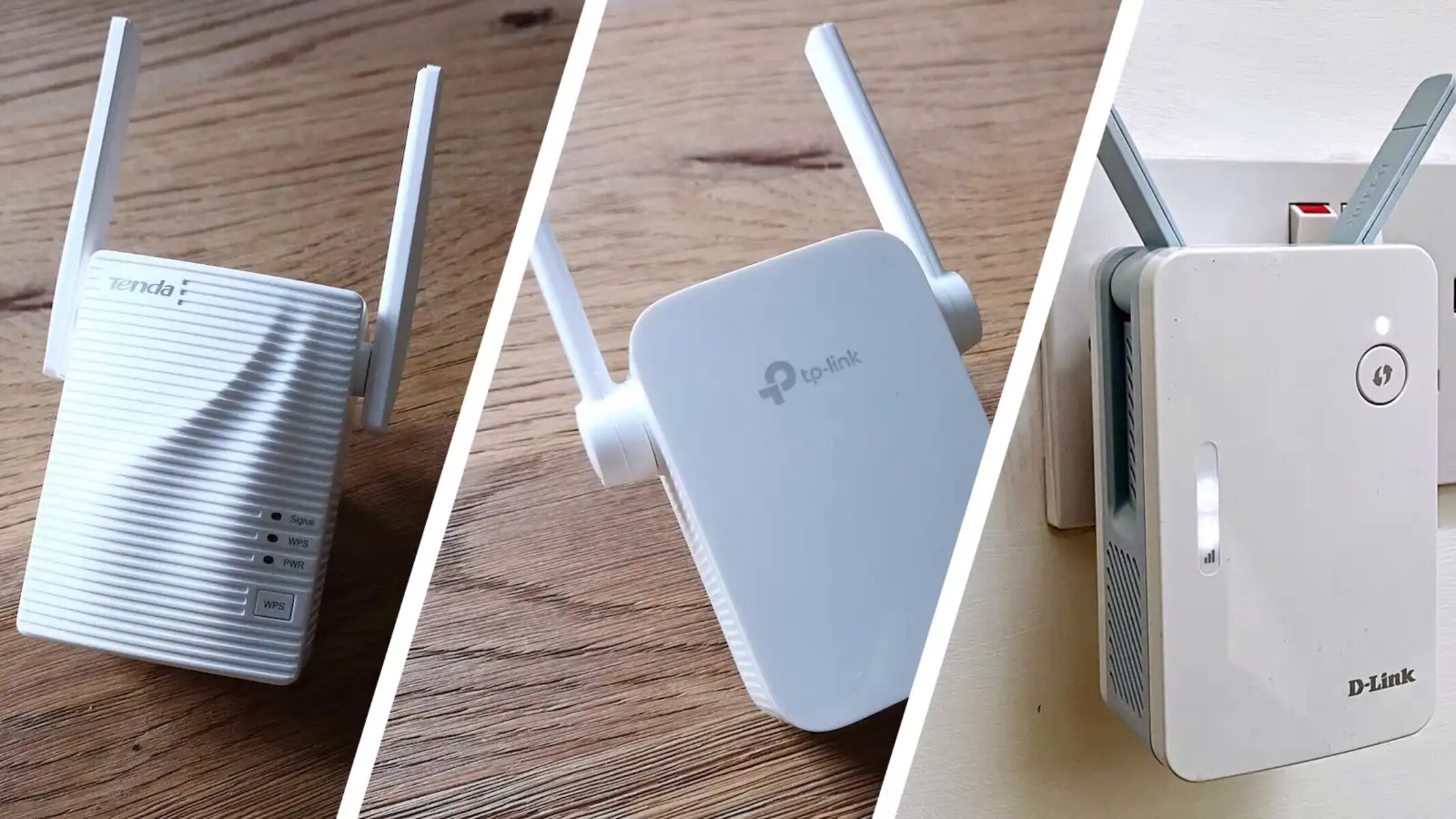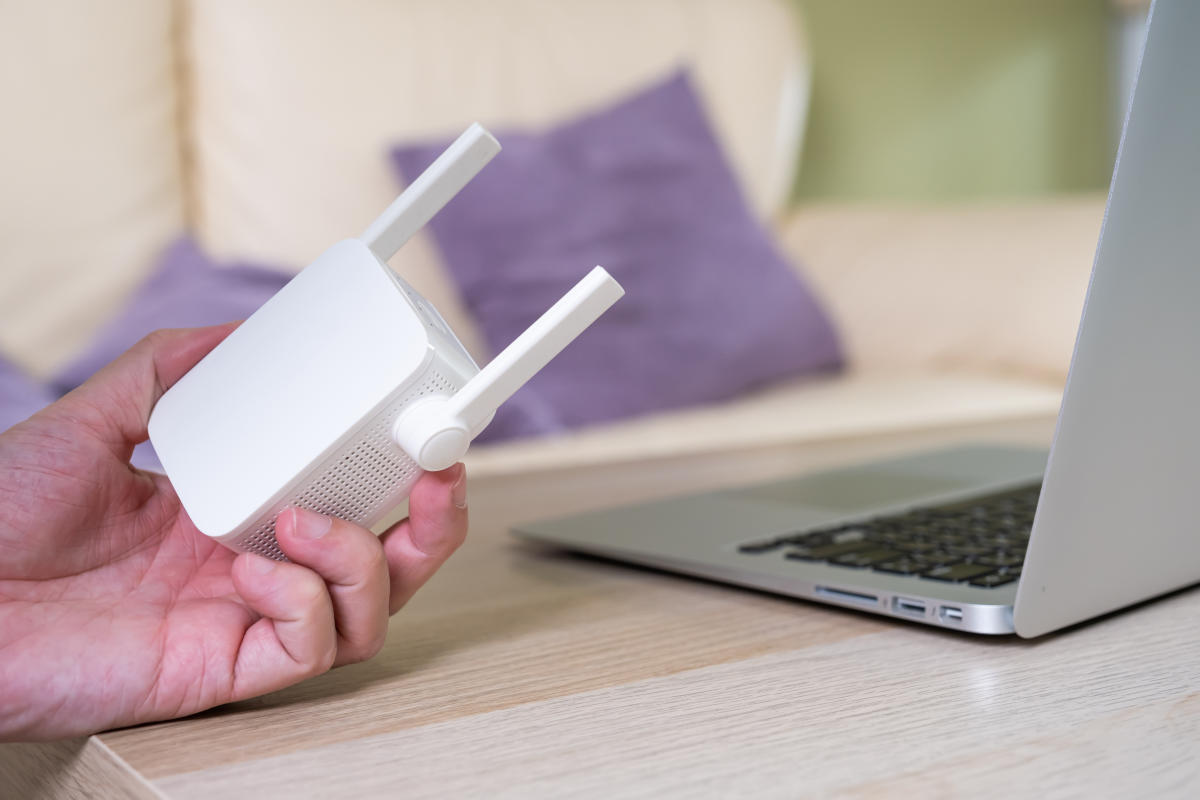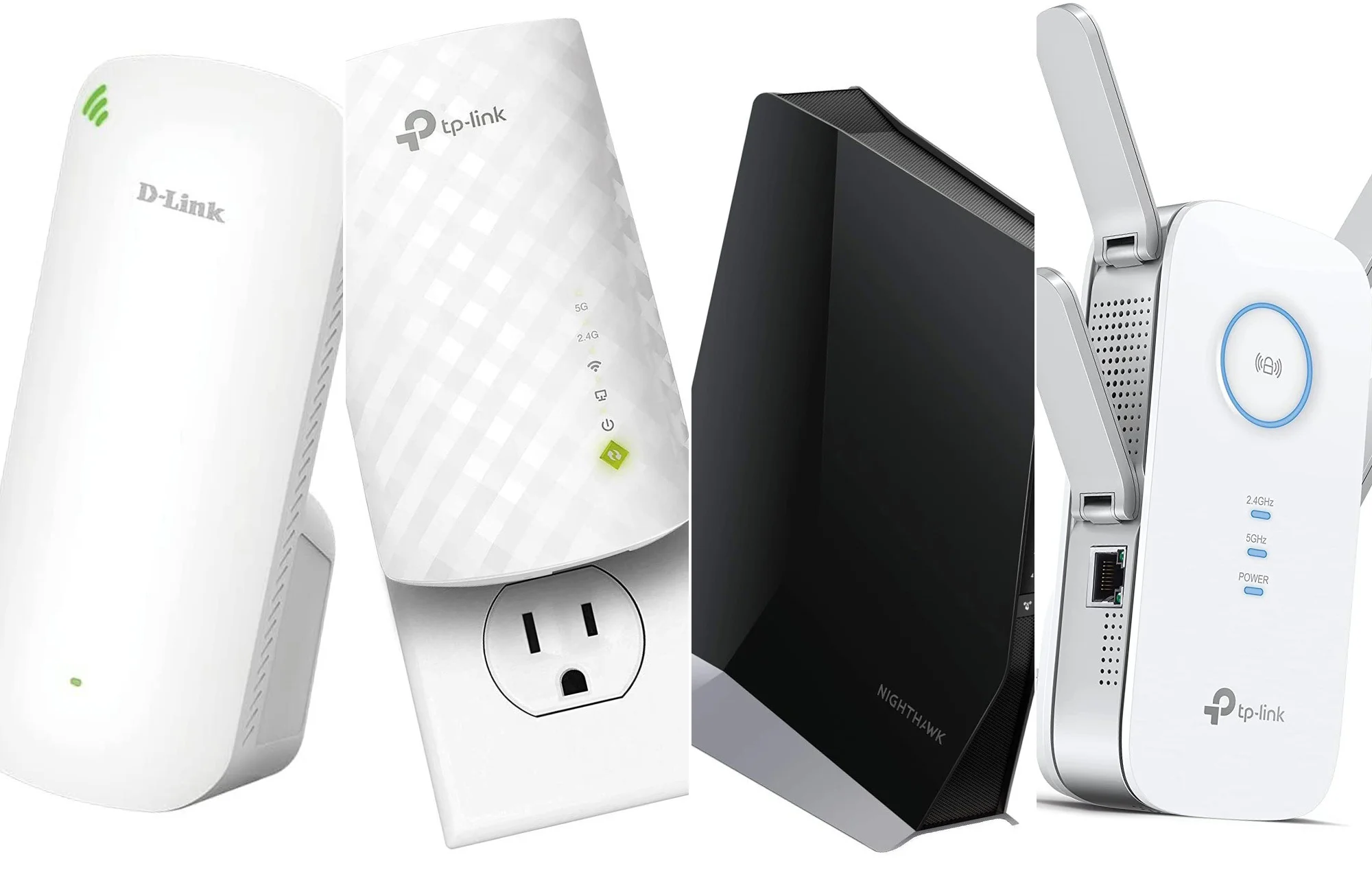Introduction
With the increasing reliance on wireless connectivity for everyday tasks, having a strong and reliable Wi-Fi signal has become crucial. However, there are instances when even the most powerful routers struggle to provide adequate coverage, especially in larger homes or offices with multiple floors and thick walls. This is where a Wi-Fi booster comes into play.
A Wi-Fi booster, also known as a range extender or repeater, is a device that amplifies and extends the existing Wi-Fi signal, allowing it to reach areas that were previously out of range. It acts as a bridge between the main router and the devices connected to it, ensuring a seamless and consistent Wi-Fi experience throughout your space.
Understanding how a Wi-Fi booster works and what it can do for your internet connectivity is essential when considering whether to invest in one. In this article, we will delve into the inner workings of Wi-Fi boosters and explore the benefits they offer.
So, if you find yourself with weak or unreliable Wi-Fi coverage in certain areas of your home or office, keep reading to discover how a Wi-Fi booster can be a game-changer in enhancing your internet experience.
Understanding Wifi Boosters
Before diving into how a Wi-Fi booster works, it’s important to understand the basic concept behind it. A Wi-Fi booster is designed to improve the range and strength of your existing wireless network by capturing the existing Wi-Fi signal and rebroadcasting it at a higher power. In simple terms, it amplifies the signal coming from your router so that it can reach areas that were previously out of range.
A Wi-Fi booster is a cost-effective solution for those experiencing weak Wi-Fi signals in certain parts of their premises. It eliminates dead zones and ensures a strong and stable internet connection throughout your space. However, it is essential to note that a Wi-Fi booster cannot create a new network; it relies on an existing Wi-Fi signal to amplify and extend coverage.
There are a few factors to consider when it comes to Wi-Fi boosters. Firstly, they work best when placed within range of both the router’s signal and the area where you need enhanced coverage. Secondly, the booster should be positioned in a central location to ensure the signal can reach every corner of your space effectively. Lastly, for optimal performance, ensure that the booster is compatible with your existing router and supports the same Wi-Fi standards.
It’s also worth mentioning that while Wi-Fi boosters can significantly improve coverage, they may not be the best solution for all situations. In some cases, using a wired connection or upgrading to a more powerful router may be a more effective option. However, for most home and small office setups, a Wi-Fi booster is a convenient and cost-effective solution.
Now that we have a basic understanding of Wi-Fi boosters, let’s explore how they work their magic to extend the reach of your Wi-Fi network in the next section.
How Wifi Boosters Work
Wi-Fi boosters work by receiving the existing Wi-Fi signal from your router and then amplifying and rebroadcasting it. This process helps to extend the range of your Wi-Fi network and improve connectivity in areas that were previously experiencing weak or no signal.
When a Wi-Fi booster is set up and connected to your existing network, it acts as a middleman between your devices and the main router. It captures the wireless signal coming from the router and then amplifies it before transmitting it to your devices. This amplification process strengthens the signal and enables it to cover a larger area, eliminating dead spots and ensuring a smoother and more stable internet connection.
Most Wi-Fi boosters use antennas to both receive and transmit the Wi-Fi signal. The antennas work by capturing the signal from your router and then broadcasting it at a higher power level. Some boosters may utilize multiple antennas to enhance signal strength and coverage even further.
Another essential aspect of how Wi-Fi boosters work is the frequency band they operate on. Most boosters support both the 2.4 GHz and 5 GHz frequency bands, allowing them to extend the coverage of both older and newer Wi-Fi devices. This dual-band capability ensures compatibility with a wide range of devices and provides flexibility in optimizing the network settings for different use cases.
It’s important to note that while Wi-Fi boosters can improve signal strength and coverage, they also introduce some latency into the connection. This is due to the additional processing and transmitting steps involved in the signal amplification process. However, the latency introduced by a Wi-Fi booster is generally negligible and does not significantly impact everyday internet usage.
Now that we have a better understanding of how Wi-Fi boosters work their magic, let’s explore some of the specific techniques they employ to amplify the Wi-Fi signal and extend network coverage in the next section.
Signal Amplification
Signal amplification is a crucial process in Wi-Fi boosters that helps to enhance the strength and reach of the Wi-Fi signal. By amplifying the signal, a Wi-Fi booster ensures that it can cover a larger area and provide better connectivity even in previously weak or dead zones.
One of the primary methods used for signal amplification is the use of high-gain antennas. These antennas are designed to capture the Wi-Fi signal from the main router and amplify it before rebroadcasting it. High-gain antennas have a narrower beam pattern, which allows them to focus the signal in a specific direction, increasing its strength over a longer distance.
Another technique used in signal amplification is the use of power amplifiers. Power amplifiers are electronic components that boost the power of the Wi-Fi signal to increase its range. These amplifiers work by taking the incoming signal and applying additional power to it, allowing it to travel farther and penetrate through obstacles such as walls or floors.
In addition to high-gain antennas and power amplifiers, some Wi-Fi boosters also utilize advanced signal processing algorithms to further enhance the signal quality. These algorithms work by reducing noise and interference, optimizing data transmission, and improving overall network performance. By processing the signal before rebroadcasting it, the Wi-Fi booster ensures that the amplified signal is of high quality and can provide a reliable and efficient internet connection.
It’s important to note that while Wi-Fi boosters can significantly improve signal strength and coverage, there are limitations to how much they can amplify the signal. Factors such as the distance between the main router and the booster, the presence of obstructions, and the quality of the Wi-Fi signal from the router can affect the effectiveness of the signal amplification process. It’s recommended to position the Wi-Fi booster strategically to achieve the best results and ensure optimal signal amplification.
Now that we have explored how Wi-Fi boosters amplify the signal to extend network coverage, let’s move on to the next section, which focuses on extending the range of the Wi-Fi network.
Extending Wifi Range
One of the primary goals of a Wi-Fi booster is to extend the range of your wireless network. By extending the range, a Wi-Fi booster ensures that you have a strong and reliable internet connection in areas that were previously out of range or experiencing weak signals.
To extend the Wi-Fi range, a Wi-Fi booster acts as a relay, capturing the existing Wi-Fi signal from the main router and then rebroadcasting it with increased strength. This rebroadcasted signal can reach areas that were previously unreachable, such as far corners of your home, backyard, or even multiple floors in a building.
When selecting a Wi-Fi booster for range extension, it’s important to consider the coverage area it can offer. Different Wi-Fi boosters have varying coverage ranges, so it’s essential to choose one that can effectively cover your desired area. Factors such as the size and layout of your space and potential obstacles like walls or appliances should be considered to ensure optimal range extension.
In addition to range extension, a Wi-Fi booster can also improve coverage by eliminating dead zones. Dead zones are areas where the Wi-Fi signal is extremely weak or nonexistent. By strategically placing a Wi-Fi booster in or near a dead zone, you can fill the gap and ensure seamless connectivity throughout your space.
It’s worth mentioning that the effectiveness of range extension will depend on various factors, including the strength and quality of the initial Wi-Fi signal, the distance between the main router and the booster, and any physical barriers in between. It’s recommended to experiment with different booster placements to achieve the best results and ensure maximum Wi-Fi coverage.
By extending the Wi-Fi range and eliminating dead zones, a Wi-Fi booster can significantly improve your internet experience by providing reliable connectivity throughout your home or office. Now that we have explored how Wi-Fi boosters extend the range of the network, let’s move on to the next section, which discusses the role of dual-band technology in enhancing Wi-Fi performance.
Dual-Band Technology
One of the key features of modern Wi-Fi boosters is their support for dual-band technology. Dual-band technology allows a Wi-Fi booster to operate on two different frequency bands simultaneously: the 2.4 GHz and 5 GHz bands. This technology plays a crucial role in enhancing Wi-Fi performance and providing a seamless internet experience.
The 2.4 GHz band is the most common frequency used by Wi-Fi devices, including routers, smartphones, and laptops. It has a longer range and can penetrate walls and obstacles more effectively but may suffer from congestion and interference in areas with many Wi-Fi devices or other electronics operating on the same frequency. The 5 GHz band, on the other hand, offers faster speeds and is less prone to interference but has a shorter range.
By supporting dual-band technology, a Wi-Fi booster can extend the coverage on both the 2.4 GHz and 5 GHz bands, catering to a wider range of devices and optimizing performance based on specific needs. For instance, older devices that only support the 2.4 GHz band can benefit from extended coverage and improved signal strength, while newer devices that support the 5 GHz band can enjoy faster speeds and reduced congestion.
Dual-band Wi-Fi boosters achieve this by creating two separate Wi-Fi networks, one for each frequency band. This allows devices to connect to the most suitable network based on their capabilities and the surrounding conditions. For example, devices that are closer to the booster may connect to the 5 GHz network for faster speeds, while devices in the more distant areas can connect to the 2.4 GHz network to ensure a stable and reliable connection.
Furthermore, dual-band technology also enables the Wi-Fi booster to intelligently manage and optimize network traffic. It can automatically select the ideal band for each device to ensure smooth performance and minimize interference between devices. This dynamic band switching capability helps to deliver an optimized Wi-Fi experience and ensures that every device connected to the network gets the best possible performance.
When selecting a Wi-Fi booster, it’s recommended to choose one that supports dual-band technology, especially if you have a mix of older and newer devices in your space. This will allow you to take full advantage of the extended coverage and optimized performance offered by the Wi-Fi booster.
Now that we have explored the role of dual-band technology in enhancing Wi-Fi performance, let’s move on to the next section, which focuses on choosing the right Wi-Fi booster for your needs.
Choosing the Right Wi-Fi Booster
When it comes to choosing the right Wi-Fi booster for your needs, there are several factors to consider to ensure that you get the best performance and coverage for your specific situation. Here are some key points to keep in mind:
1. Coverage Area: Assess the size and layout of your space to determine the coverage area you need. Wi-Fi boosters come with different coverage ranges, so choose one that can effectively cover your desired area, eliminating any dead zones.
2. Compatibility: Ensure that the Wi-Fi booster you choose is compatible with your existing router. Look for boosters that support the same Wi-Fi standards as your router to ensure proper communication and optimal performance.
3. Dual-Band Support: Consider a Wi-Fi booster that supports dual-band technology, especially if you have a mix of older and newer devices. This will allow you to take advantage of extended coverage on both the 2.4 GHz and 5 GHz bands.
4. Antenna Types: Different Wi-Fi boosters come with varying antenna types, including internal and external antennas. External antennas, especially high-gain antennas, can enhance signal strength and coverage. Consider the antenna type based on your specific needs.
5. Ease of Installation: Look for a Wi-Fi booster that offers an easy and straightforward installation process. Some boosters come with user-friendly setup wizards and mobile apps that assist with the installation and configuration process.
6. Brand Reputation and Reviews: Research and read reviews about different Wi-Fi booster brands and models to gauge their performance, reliability, and customer satisfaction. Opt for a reputable brand known for producing high-quality products.
7. Budget: Set a budget for your Wi-Fi booster purchase and consider models that offer the features you need within your price range. Wi-Fi boosters come in various price ranges, so it’s essential to find a balance between affordability and performance.
By considering these factors, you can choose a Wi-Fi booster that meets your specific requirements and enhances your Wi-Fi coverage and performance.
Now that we have discussed how to choose the right Wi-Fi booster, let’s move on to the next section, which focuses on the installation process.
Installing a Wi-Fi Booster
Installing a Wi-Fi booster is usually a straightforward process that can be completed by following a few simple steps. Here is a general guide to help you install your Wi-Fi booster:
- Choose an Optimal Location: Select a location for your Wi-Fi booster that is within range of both your router’s signal and the area where you need to improve coverage. Ideally, place the booster in a central location to ensure optimal signal distribution.
- Plug in the Wi-Fi Booster: Connect the Wi-Fi booster to a power outlet near your router. Ensure that the booster is receiving power by checking the LED lights on the device.
- Pair the Wi-Fi Booster with your Router: Using a computer or mobile device, navigate to the Wi-Fi booster’s setup page or launch its mobile app. Follow the provided instructions to pair the booster with your existing router’s network. This usually involves selecting your network name and entering your Wi-Fi password.
- Position the External Antennas (if applicable): If your Wi-Fi booster has external antennas, adjust them for maximum signal strength. Position the antennas vertically or diagonally to cover a wider area.
- Test and Optimize: Once the Wi-Fi booster is successfully installed, check the signal strength and coverage in the areas that previously had weak connectivity. If needed, you can experiment with different locations or adjust the position of the booster and antennas to optimize performance.
It’s important to note that these are general installation steps, and the specific process might vary depending on the brand and model of your Wi-Fi booster. Always refer to the manufacturer’s instructions and documentation for detailed installation guidance.
If you encounter any issues during the installation process or need help optimizing your Wi-Fi network, consult the user manual or contact the manufacturer’s support for assistance. They will be able to provide specific troubleshooting steps or guidance tailored to your Wi-Fi booster.
Now that we have discussed how to install a Wi-Fi booster, let’s move on to the next section, which focuses on troubleshooting common Wi-Fi booster issues.
Troubleshooting Wi-Fi Booster Issues
While Wi-Fi boosters are designed to enhance signal strength and improve coverage, they can occasionally encounter issues that affect their performance. Here are some common Wi-Fi booster issues and troubleshooting steps to help resolve them:
1. Weak or No Signal: If you’re experiencing a weak or no signal from your Wi-Fi booster, ensure that it’s properly positioned within range of your router’s signal. Check the LED lights on the booster to confirm it’s receiving power. Try adjusting the booster’s position or relocating it closer to the router to improve signal strength.
2. Intermittent Connections: If your Wi-Fi booster frequently disconnects or has intermittent connections, check for any physical obstructions or interference that may be interfering with the signal. Keep the booster away from other electronic devices that may cause interference, such as microwave ovens or cordless phones.
3. Slow Internet Speeds: If you’re experiencing slower internet speeds than expected, ensure that your Wi-Fi booster supports the appropriate Wi-Fi standards. Consider using a booster with higher data transfer rates if your devices support it. You can also try rebooting both the router and booster to refresh the connection.
4. Incorrect Network Settings: Verify that your Wi-Fi booster is configured correctly and connected to the correct network. Double-check the network name (SSID) and password you entered during the setup process. If needed, reset the booster to its factory settings and repeat the setup process.
5. Firmware Updates: Check if there are any firmware updates available for your Wi-Fi booster. Keeping the firmware up to date can resolve known bugs or issues and improve overall performance. Consult the manufacturer’s website or support documentation for instructions on updating the firmware.
6. Incompatible Router: Ensure that your Wi-Fi booster is compatible with your existing router. Some boosters may have limitations or compatibility issues with certain routers or Wi-Fi standards. Verify the compatibility requirements before purchasing or installing a Wi-Fi booster.
If you’re unable to resolve the issue on your own, refer to the user manual or reach out to the manufacturer’s support for further assistance. They may provide advanced troubleshooting steps or offer specific solutions based on your Wi-Fi booster model.
By troubleshooting these common Wi-Fi booster issues, you can optimize the performance and reliability of your Wi-Fi network and enjoy a seamless internet experience.
Now that we have discussed troubleshooting Wi-Fi booster issues, let’s conclude our article with a summary of the key points covered.
Conclusion
Wi-Fi boosters play a crucial role in improving the range and strength of your wireless network, ensuring a strong and reliable internet connection throughout your space. By understanding how Wi-Fi boosters work and their benefits, you can make an informed decision about whether to invest in one.
We explored the fundamentals of how Wi-Fi boosters operate, including signal amplification and range extension. We also discussed the importance of dual-band technology in optimizing Wi-Fi performance and compatibility with various devices. Additionally, we highlighted the key factors to consider when choosing the right Wi-Fi booster for your needs, including coverage area, compatibility, and budget.
Installing a Wi-Fi booster is a relatively straightforward process, involving selecting an optimal location, pairing it with your router, and optimizing the signal. We also discussed common troubleshooting steps to address issues such as weak signals, intermittent connections, and slow internet speeds.
Overall, Wi-Fi boosters provide a practical and cost-effective solution for improving Wi-Fi coverage and performance in homes and offices. By following the installation and troubleshooting steps outlined in this article, you can maximize the benefits of a Wi-Fi booster and enjoy a seamless internet experience.
So, if you find yourself struggling with weak Wi-Fi signals or dead zones, consider investing in a Wi-Fi booster to extend the range and enhance your internet connectivity. With a reliable Wi-Fi connection, you can make the most of your online activities, whether it’s streaming HD videos, video conferencing, gaming, or simply browsing the web.
Remember to choose a Wi-Fi booster that aligns with your specific requirements, install it correctly, and troubleshoot any issues that arise. By doing so, you can take control of your Wi-Fi network and enjoy seamless connectivity in every corner of your home or office.







